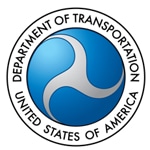SMART Transportation Division’s General Committee of Adjustment GO 610 representing conductors and trainmen, General Committee of Adjustment GO 340 representing yardmasters and SMART Sheet Metal Mechanical and Engineering Local 396 representing mechanical workers have joined the New Jersey Transit Rail Labor Coalition in asking the National Mediation Board (NMB) to proffer arbitration to its members after reaching an impasse in contract negotiations with New Jersey Transit (NJT).
The 10 unions in the NJTRLC have requested that NMB release them from further mediation.
In the requests to the NMB, the coalition wrote, “… the Coalition’s proposal is consistent with all other commuter railroad settlements this round. The company’s proposal … calls for employee health insurance contributions well above the level at every other commuter railroad, while offering wage adjustments far below those achieved at every other commuter railroad during this round … It is clear an impasse exists.”
On March 23, the NMB forwarded the coalition’s release request to NJT and sought a response by April 6.
If the NMB agrees to release the coalition unions, it will proffer binding arbitration to the unions and NJT. When either side notifies the NMB that it rejects binding arbitration, that will begin a process that could take as long as 270 days if no voluntary agreement is reached, including two Presidential Emergency Boards. The first PEB would be appointed within 30 days of either side’s rejection of the proffer of arbitration. At the end of the 270 days, both sides may resort to self-help.
The coalition elected to seek release after it became clear that NJT would not make a reasonable offer. The coalition has proposed a settlement patterned after the contracts achieved this round on Long Island Rail Road and Metro-North Railroad. NJT insists on concessionary contracts, with employees with families paying more than four times what they currently pay for health benefits.
The coalitions’ goal is to achieve a fair, voluntary agreement. It believes it has a strong case to present to a PEB. In most commuter railroad labor disputes in the past, the PEB’s recommendations led to a voluntary agreement. However, unlike arbitration, a PEB’s recommendations are not binding.
The coalition formed over the last several months after three years of each union bargaining unsuccessfully with NJT. The member unions believe working together maximizes their potential power. The coalition unions represent 88 percent of NJT unionized workers.







 A second group of federal lawmakers has introduced legislation to regulate the transport of crude oil by rail.
A second group of federal lawmakers has introduced legislation to regulate the transport of crude oil by rail.